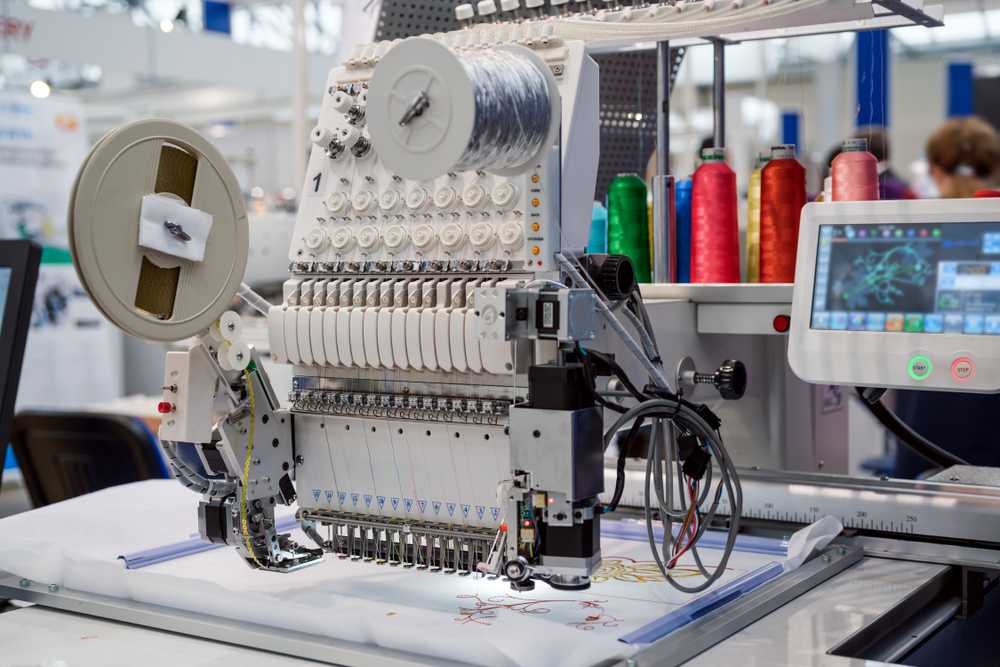Inexpensive Digitizing for Embroidery: Precision and Detail
Wiki Article
Streamlining the Art of Embroidery Digitizing: Step-by-Step Overview
Embroidery digitizing is a precise craft that demands precision and creative thinking. As innovation continues to development, the digitization process has become a lot more accessible, enabling lovers to bring their intricate layouts to life easily. In this overview, we will unravel the intricacies of embroidery digitizing, damaging down each action carefully to streamline the procedure and equip both beginners and skilled embroiderers alike. Remain tuned to discover just how you can simplify this detailed art type and transform your imaginative visions into beautifully stitched masterpieces.Comprehending Needlework Digitizing Software Program
Needlework digitizing software application acts as an important tool for changing complex styles right into digital formats suitable with embroidery machines, promoting specific sewing and modification. This customized software program allows customers to import different image file layouts, such as JPG or PNG, and convert them into embroidery machine-readable styles like DST, EXP, or PES - Digitizing for Embroidery. By making use of features like stitch editing, rug options, and thread shade choice, digitizing software allows users to control every element of the layout procedureMoreover, advanced embroidery digitizing software provides tools for producing complicated styles, changing stitch thickness, and integrating detailed information. Customers can additionally sneak peek the layout prior to sewing it out, ensuring accuracy and lessening errors. Additionally, several software application offer automated attributes that aid streamline the digitizing process, conserving time and effort.
Comprehending the capabilities of needlework digitizing software program is important for attaining top quality cause needlework jobs. By grasping this device, embroidery lovers and professionals can unleash their creative thinking and bring intricate designs to life with precision and efficiency.

Choosing the Right Layout File
After familiarizing yourself with the abilities of needlework digitizing software program, the following critical action in the process is selecting the best style declare your project. Digitizing for Embroidery. When choosing a design declare embroidery digitizing, it's vital to take into consideration the intricacy of the style, the dimension of the end product, and the kind of textile you will certainly be dealing withFor detailed layouts with great information, a high-resolution image or vector file is suggested to make sure that the embroidery maker can accurately recreate the design. Furthermore, the size of the end product plays a considerable function in choosing the right design file. Larger designs might call for higher resolution data to maintain clarity and intensity.
Moreover, the kind of fabric you will certainly be stitching on influences the selection of design documents. Different textiles may call for adjustments in the layout file to ensure that the stitches are effectively aligned and the design appears as planned. By very carefully selecting the appropriate layout data based upon these elements, you can set yourself up for a successful embroidery digitizing process.
Digitizing Devices and Strategies
Using specialized software program and precision methods, digitizing devices are important in transforming complex layouts right into embroidery-ready documents. Embroidery Get More Info digitizing software, such as Wilcom, Hatch, or Embrilliance, offers the essential system to transform art work right into stitch information. These programs supply attributes like stitch editing, underlay options, and lettering tools to ensure the design translates perfectly onto material.Among the crucial strategies in digitizing is developing a clear course for the needlework equipment to adhere to. This includes digitizing each aspect of the style with accuracy, determining stitch kinds, thickness, and instructions. By utilizing devices like digitizing tablet computers or software-specific plugins, embroiderers can attain a high degree of precision in their digitized designs.
Furthermore, grasping the art of padding sewing is essential for generating top quality needlework. Underlay sewing supports the textile and develops a structure for the layout, making certain that the last item is both aesthetically enticing and resilient. By comprehending these digitizing tools and methods, embroiderers can raise their craft and bring elaborate layouts to life with accuracy and effectiveness.
Customizing Stitch Types and Instructions
Having developed a foundation in digitizing tools and techniques, an essential facet in progressing embroidery craftsmanship depends on customizing stitch kinds and instructions with accuracy and purpose. The selection of stitch kinds can dramatically influence the general look and structure of the embroidered layout. Satin stitches, understood for their smooth and shiny surface, work well for creating boundaries and message. On the various other hand, fill stitches are excellent for covering bigger locations successfully. By strategically combining these stitch types, embroiderers can attain deepness and measurement in their layouts.Furthermore, the direction of stitches plays a crucial role in enhancing the visual appeal of the final embroidery. By trying out with various stitch angles and patterns, embroiderers can bring their designs to life with amazing detail and complexity.
Screening and Refining Your Digitized Style
To make certain the precision and quality of your digitized design, complete screening and improvement are important action in the needlework digitizing procedure. As soon as you have finished the digitization of your design, it is critical to evaluate it before waging the actual embroidery. Checking permits you to identify any type of possible issues such as thread breaks, stitch thickness troubles, or layout distortions that might influence the result.
After screening, it is very important to refine your digitized design based on the comments from the test sew-out. This might include tweaking stitch settings, adjusting densities, or making adjustments to the total design to achieve the wanted outcome. By iterating view it now via screening and improvement, you can tweak your digitized style to excellence before progressing with the real embroidery process.
Conclusion
To conclude, mastering the art of embroidery digitizing needs a comprehensive understanding of the software application, choosing the best style file, utilizing digitizing devices and techniques, tailoring stitch kinds and instructions, and screening and improving the digitized layout. By adhering to these actions, embroiderers can streamline the digitizing procedure and produce high-quality embroidered designs with accuracy and effectiveness.Report this wiki page